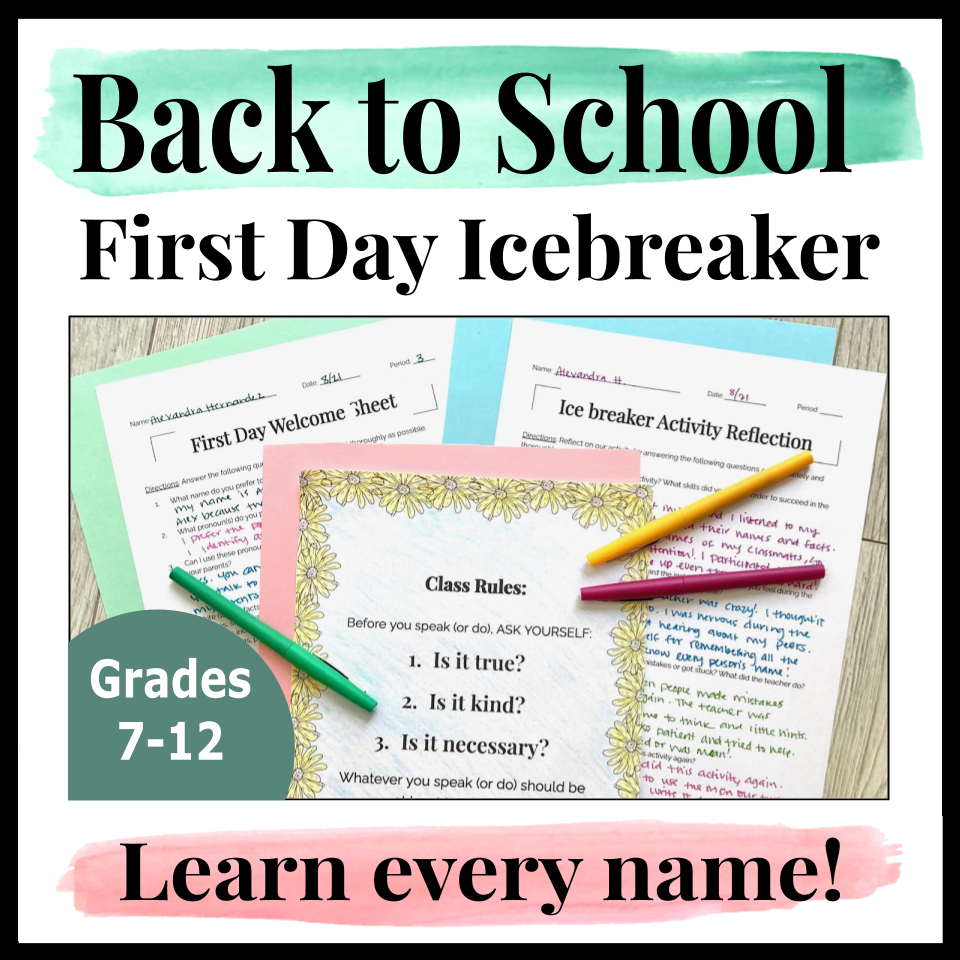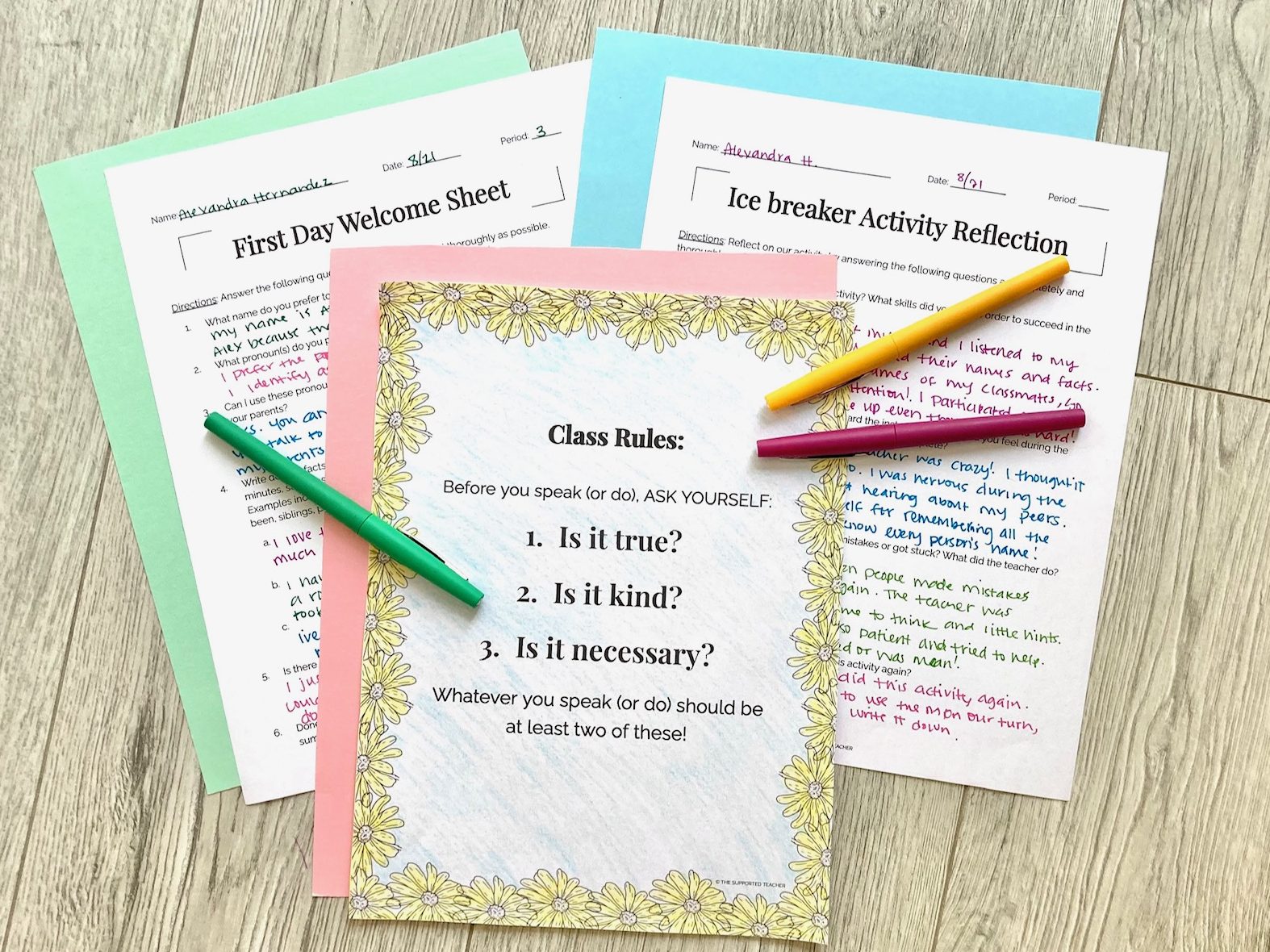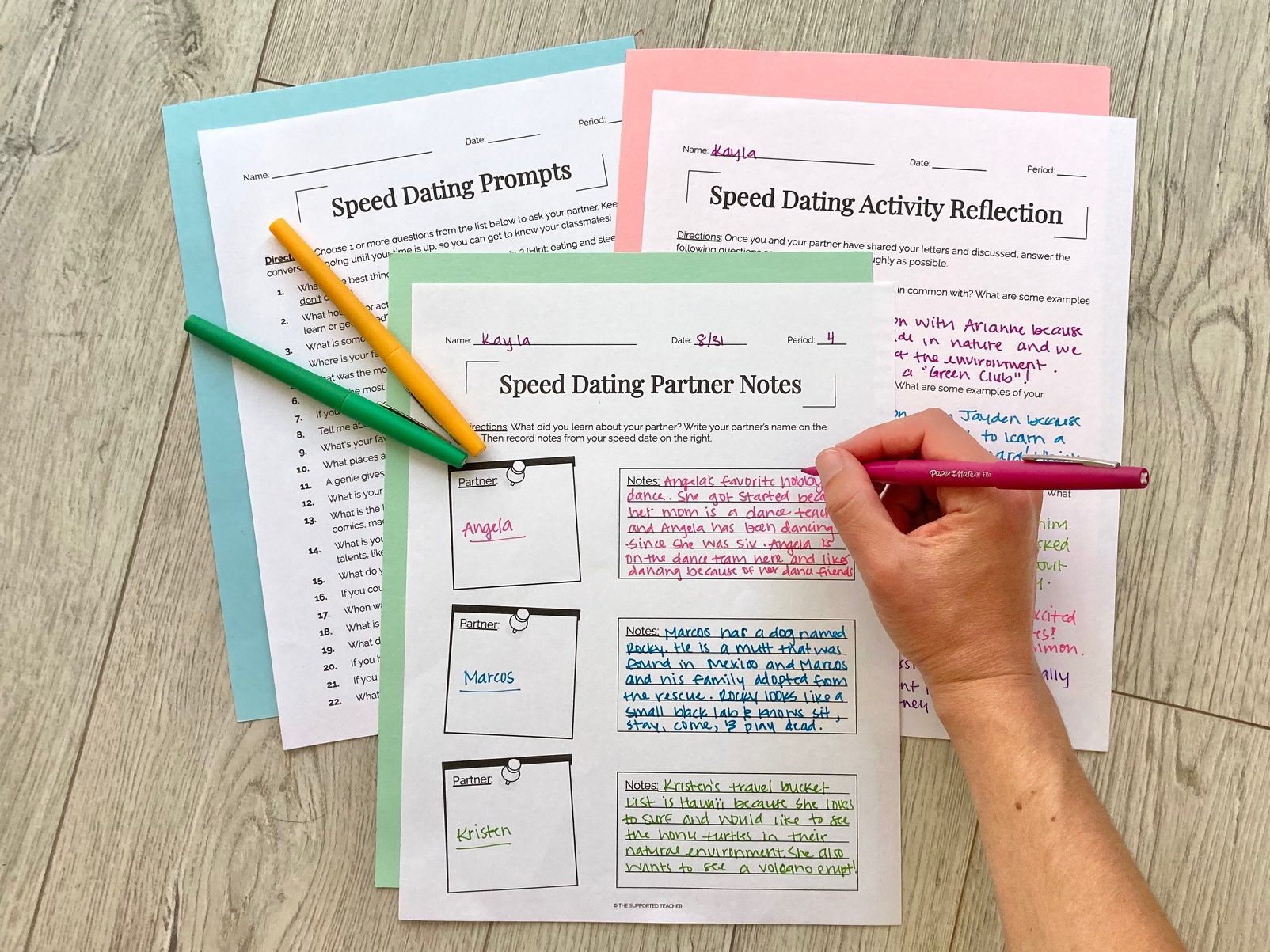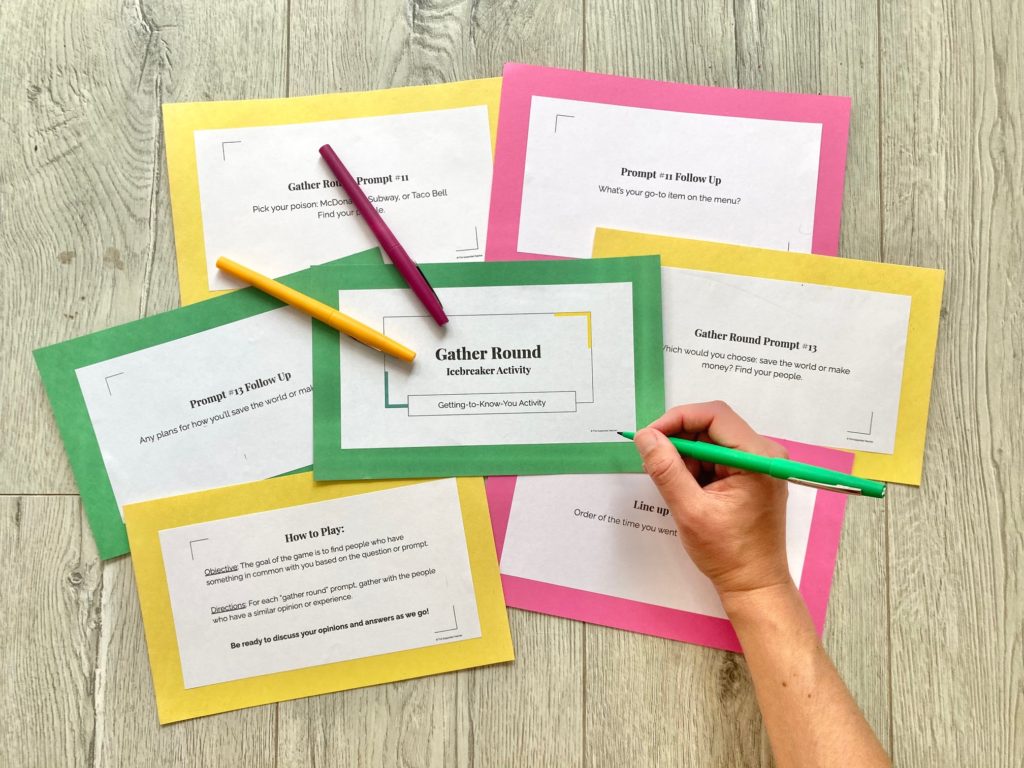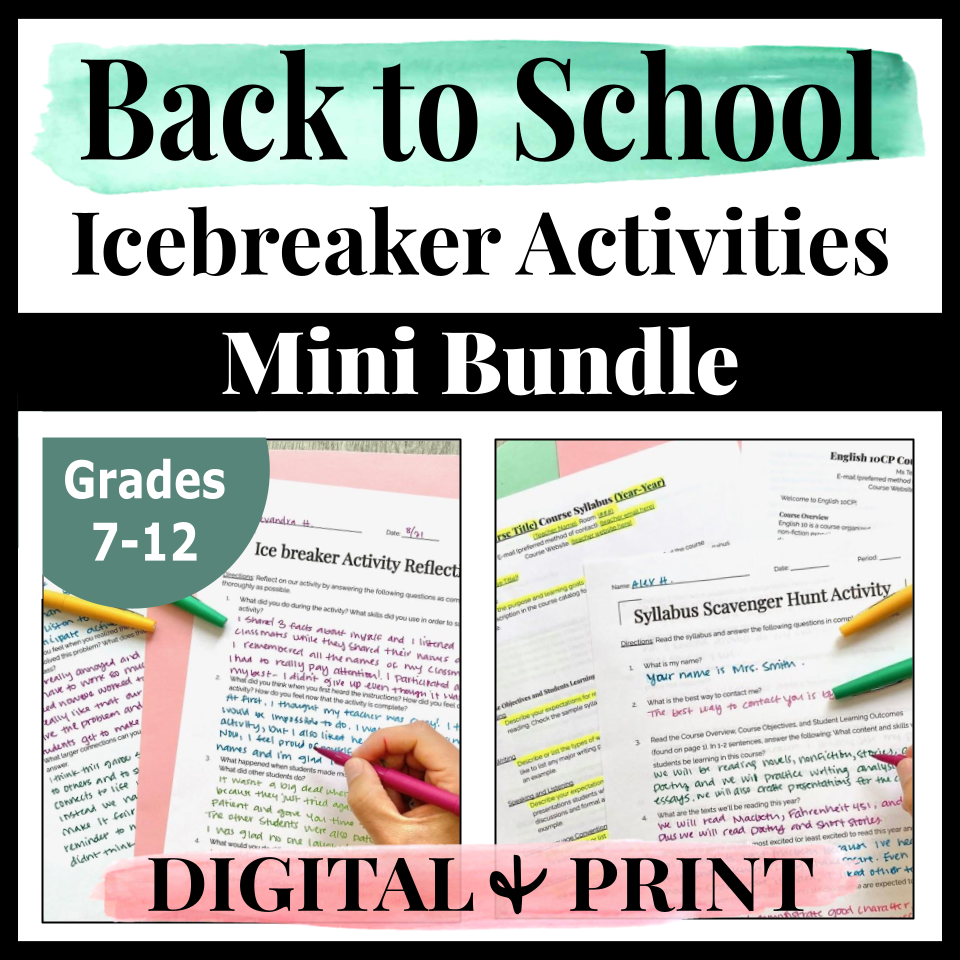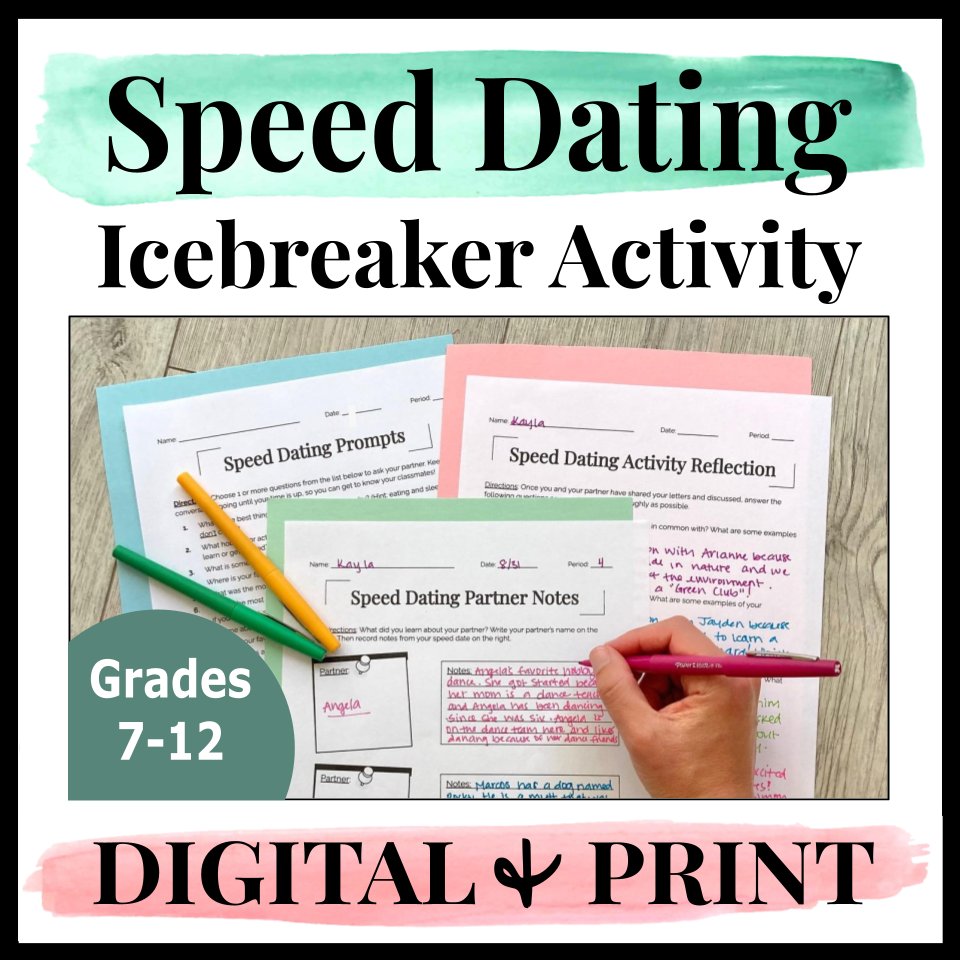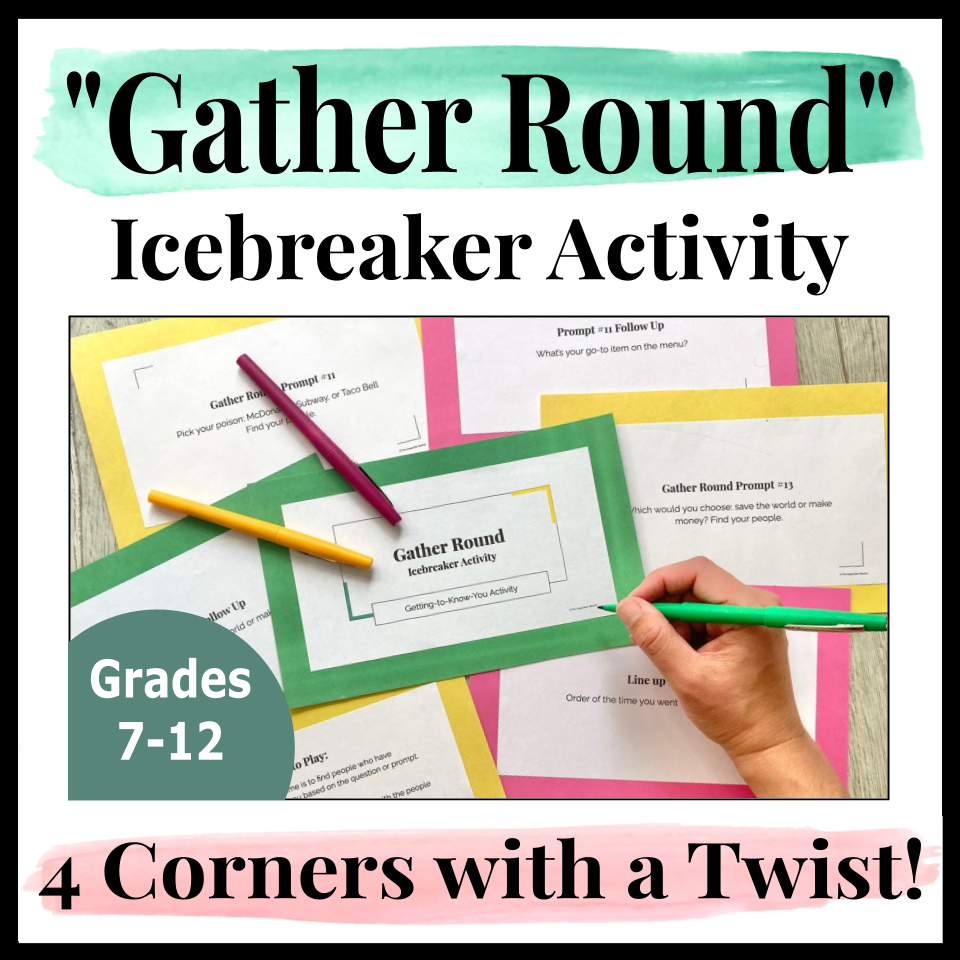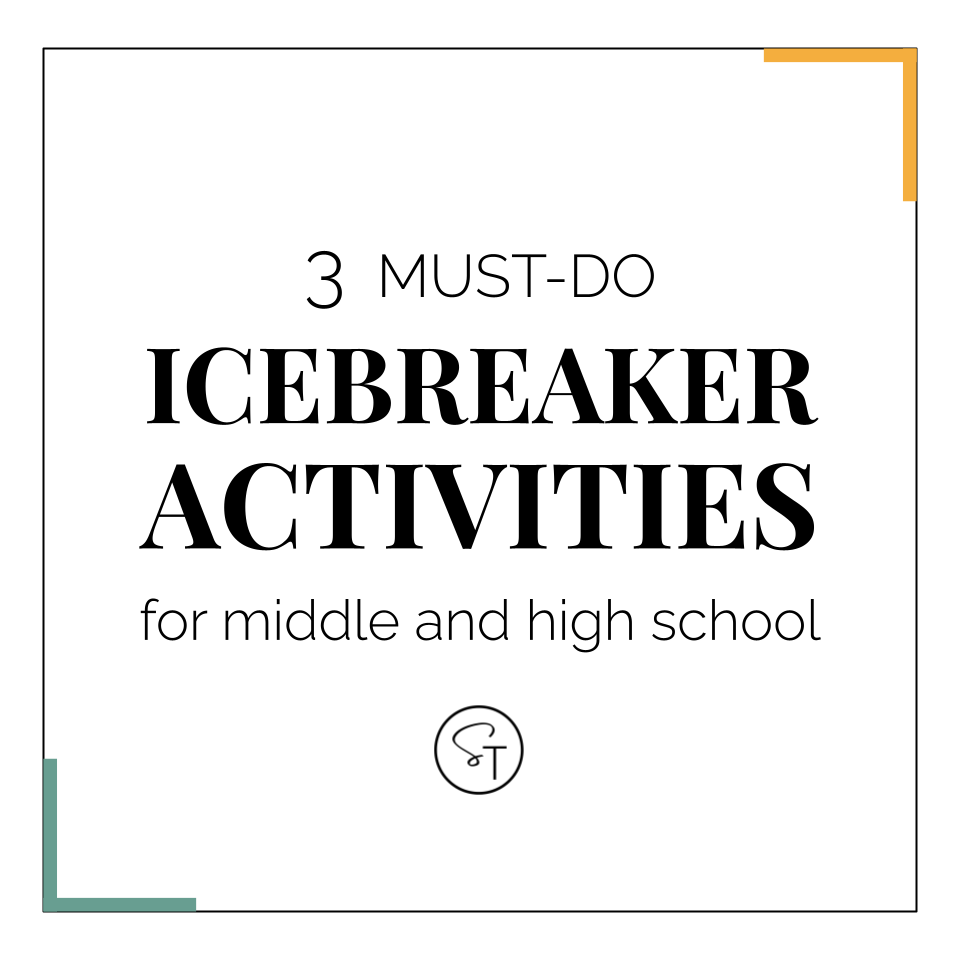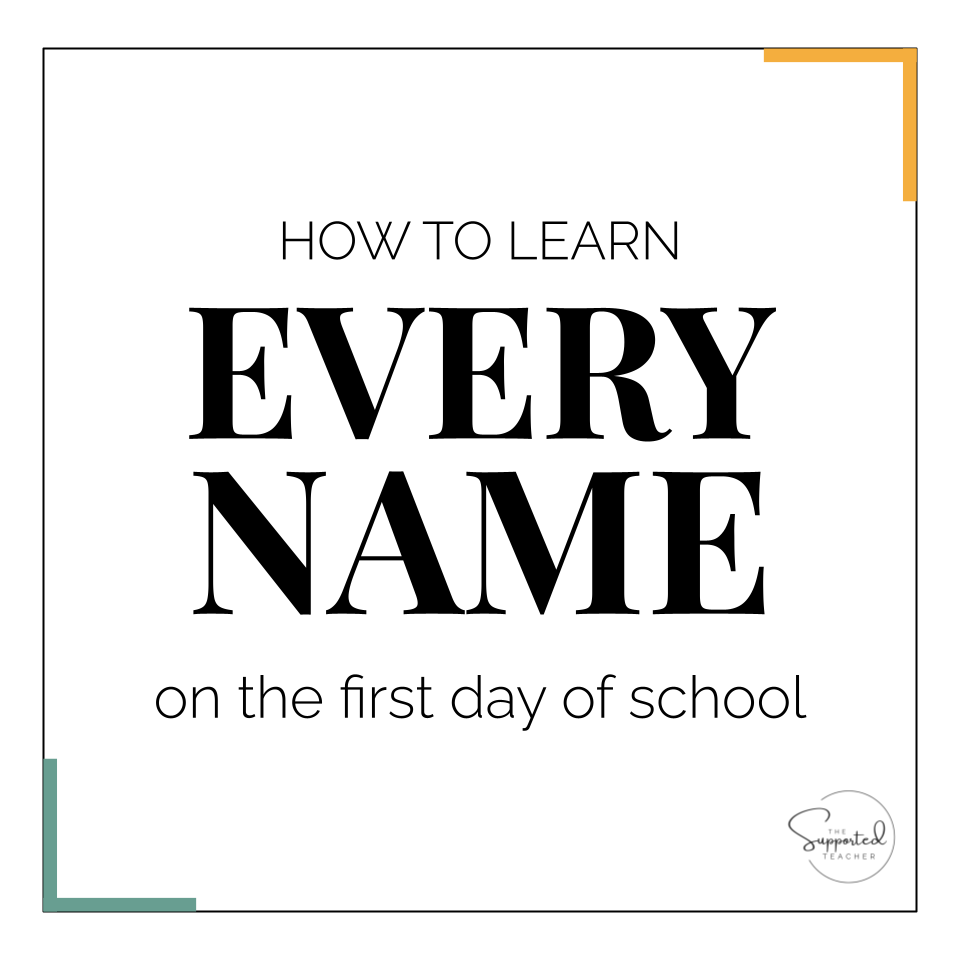It’s back to school season and the first day of school is coming up quick!
You’re wondering how you’re going to get to know your students, break the ice & help students get comfortable with each other, AND set expectations and boundaries… all in the first couple of days!
Before you let pinterest-perfect classrooms and posts on the teachergram make you think you need to spend hours scouring the internet for the perfect activity or prepping some elaborate game that takes wayyy too many hours of your already-too-short prep time, pause for a second and reflect on what you’re looking for in a back to school icebreaker activity.
The icebreaker you choose will set the tone for the rest of the school year, so you might want to make a list of the norms and behaviors you’d like to see in students on a given day over the year. For example, right from the first day, you probably want to see your students speaking and listening, collaborating to solve problems, and even doing some writing and reflecting.
Too Many Icebreakers Struggle with Balance
Some are way too socially risky; they require students to share an opinion in front of their peers or to complete a silly task or stand out in some other way in a room full of strangers – a nightmare for the typical middle or high school student just trying to fit in.
Other icebreakers aren’t risky enough. They ask students random “fluff” questions like their favorite color or what they ate for dinner last night. Of course, sometimes students surprise us with some awesome answer, full of metaphor, explaining how the color yellow is their favorite because it represents rejuvenation and that’s important because of all they’ve overcome in the last year…
But let’s be honest, most students just say “I like yellow” and move on.
So nobody really gets to know much about each other and students are left feeling just as awkward and unsure as they did when they walked in.
Other icebreakers set teachers and students up for a classroom management battle right from the get-go, asking students to throw papers or objects, run from space to space, or scream and shout at peers as they stack cups or build unstable buildings….
Unless throwing, running, and shouting is part of typical classroom behavior you want to see on a daily basis, starting out with it on the first day seems unwise, misleading, and just plain confusing for students… not to mention overwhelming (especially for students with special needs, students learning English, or students who are just plain shy!)
Other icebreakers don’t reflect the classroom norms of participation, teamwork, and collaboration most teachers want to establish. Icebreakers that force students to complete various activities in total silence or ask students to spend way too long sitting passively quietly communicate to students that their voice doesn’t matter and isn’t welcome in this space.
If you want students speaking up, sharing ideas, listening actively, and generally participating on a daily basis (and I sure-as-heck hope you do), then you want to choose an icebreaker that establishes this norm from the very first day.
Icebreakers that Actually Work
Here are 3 of my favorite icebreaker activities that are perfect for the first day of school with middle or high school students.
All 3 icebreakers are balanced, help students actually get to know each other, and set expectations for classroom norms like participation and collaboration.
1. The Name Game (a version that’s actually fun and actually works)
The name game has a lot of forms, and most of them get a bad wrap.
In this version of the game, there’s no cheap gimmick (like corny alliterative adjectives) and you’ll come away from the game knowing every student’s name and with a baseline understanding of each students’ personality and abilities.
In its simplest form, each student shares:
- their own name
- 3 facts about themselves
- and the names of the students who have already shared
This game is great because it’s simple to play, requires no prep, and is really engaging. It gets every single student in your class speaking, sharing ideas, listening actively, and participating on the very first day, which is HUGE in establishing classroom norms and expectations early on.
The best thing about the name game (besides helping me learn every name and setting expectations) is that I can really see my students’ personalities: I can see who gives up right away, who gets silly, who struggles with basic recall, who gets a little…testy, who has trouble paying attention…
By the time the game ends, I feel like I truly know each student. I gain SO much information about students in terms of both ability and personality just from playing this game. In parent meetings during the first few weeks of school, my colleagues regularly express surprise at how much I know about my students – and most of it I learned on the very first day!
You can learn more about the Name Game Icebreaker Activity here. If you’re looking for ready-made materials for implementing this icebreaker, I’ve created a presentation, welcome survey, and debrief activity – you can find them here!
2. Speed Dating
In the speed dating icebreaker, students meet with a partner for a short time and have a quick discussion to get to know each other. At the end of the allotted time, students change partners and have a new discussion.
The speed dating icebreaker is great for getting students talking in genuine conversations without having them feel singled out in front of the whole class.
You can provide students with a “menu” of questions and let them choose which questions to ask their partners. 10-15 questions is ideal: less than 10 becomes repetitive (no one wants to tell the same story over and over) and more than 15 can become overwhelming for students to choose from.
The key with creating questions is to make sure it’s a question that encourages students to expand and elaborate their answers – ideally questions that elicit responses that become stories and an actual conversation, rather than a stiff, awkward interview.
Avoid asking yes/no questions and definitely avoid questions that might force students into taking too great of social risk or sharing stories that can make peers uncomfortable.
This activity is easiest to run with students sitting or standing in concentric circles so students can easily change partners with each round.
If space is tight, 2 parallel lines can also work well, just make sure to sit or stand near the end so you can direct the student at the end where to go with each partner change.
Get your timing right to make this icebreaker really work. Contrary as it may seem, you want to change partners when the discussion is still “hot” rather than waiting until it fizzles out. This keeps engagement high, so that students jump right in with each new partner. 2-5 minutes tends to be about right.
If you’re comfortable with your classroom management, definitely give yourself a seat at the table, so you can chat with and get to know students too!
3. Gather Round (4 Corners with a Twist)
In this fun variation of 4 corners, students move to various spaces in the room in order to sort themselves into smaller groups based on something they have in common, like having the same favorite type of food or participating in the same hobby.
Gather Round is simple and fun and gets students up and moving. The activity requires minimal social risk and helps students find common ground and differences, so they actually get to know their peers.
It’s best to structure the activity with a presentation and a prompt on each slide. When you show each new prompt, students move accordingly.
To help students learn every more about each other, follow each prompt slide with a “follow up” question students can ask peers in their group to get students speaking and listening. For example, if they’re in the same hobby group, they might ask each other about how they first got into the hobby or how often they participate.
Want these games ready made?
Click the images below to view ready-made materials for each of the three icebreaker activities described above. The resources are created in Google Slides for easy sharing and access and are 100% editable so you can edit directions and questions to fit your unique needs.
Want to grab all 3 icebreakers from this post? Buy the Icebreaker Mini Bundle for a discounted price!

